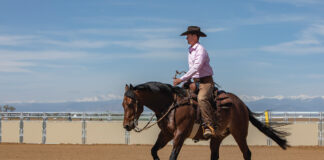Horse showing can be a double-edged sword. When it goes well, it’s the best; but when it goes wrong it can really go wrong—and have long-lasting effects on your confidence and self-esteem.
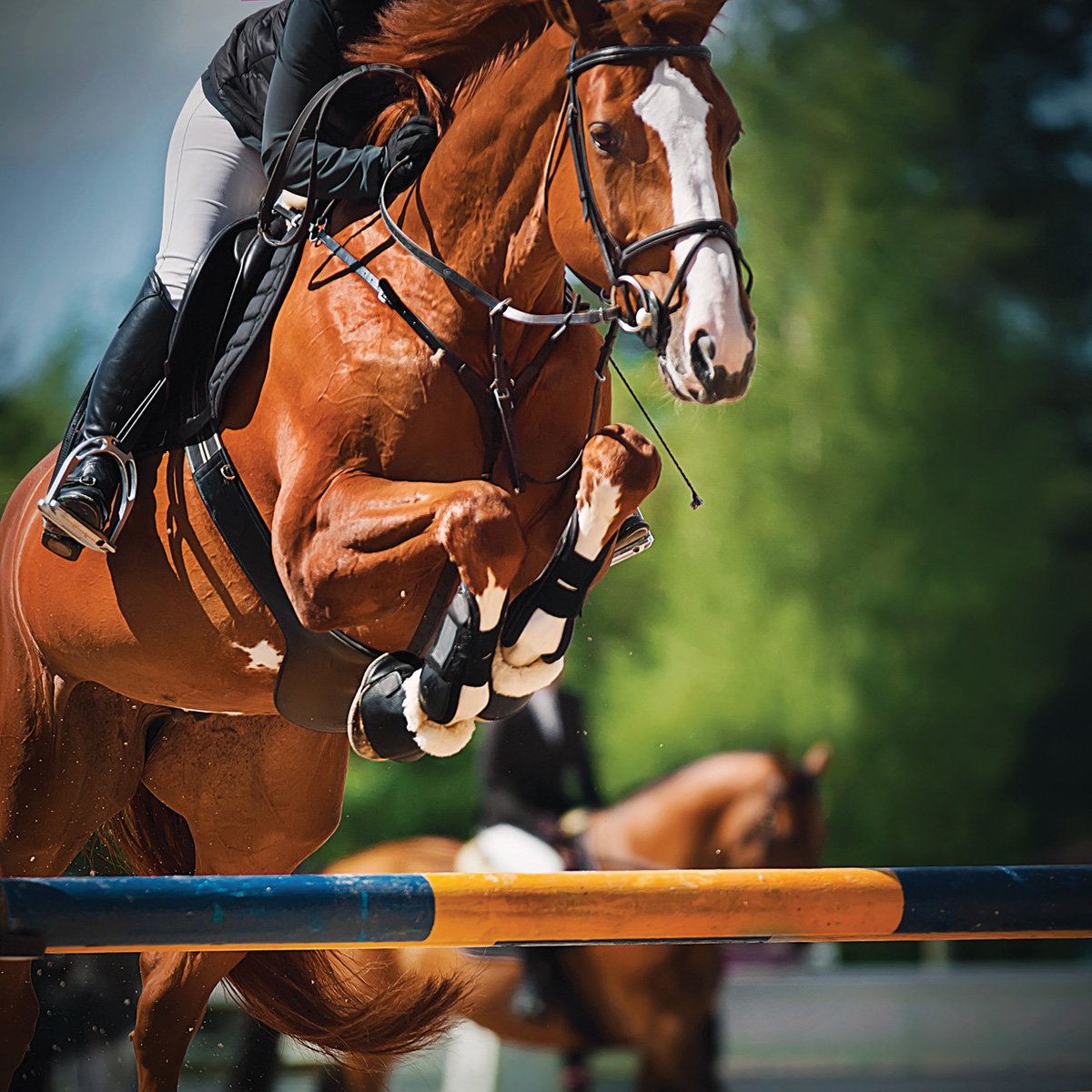
What Is Causing Your Horse Show Anxiety?
Most horse-show fear falls into two categories: fear of getting hurt and fear of making a fool of yourself. While one may strike you as easier to deal with than the other, fear in any form can be crippling.
No matter where your fear stems from, there are multiple ways you can head off anxiety overload. Preparation is key, both mentally and physically. Here are some ways to be as prepared as possible next time you have an off-farm adventure.
Physical Preparation
1. Create checklists. While you need not carry around a physical sheet of paper (having it on your phone is fine), knowing exactly what you need before the show and confirming that it’s in your trailer can ease a lot of showing anxiety.
Keeping everything in its designated place in the trailer ensures you know exactly what’s missing at a glance. Other things to keep on hand for last-minute questions and clarification include rulebooks, dressage tests, patterns, and courses.
2. Schedule like you’re leaving on vacation. Preparing for vacation can be time-consuming, but the result is always worth it. Plan your show day like you plan a trip, working backward from your ride time. Knowing when you need to be in the ring will allow you to plan when to groom, tack up, get dressed, get on and warm up.
Physically writing it all down lets you have a focused plan and quiets the mental chatter and doubt, according to Jessica Bollinger, a licensed clinical social worker who assists athletes from a variety of disciplines. Consider posting your schedule on your stall so it’s easily accessible. Rushing creates stress and is something you want to avoid.
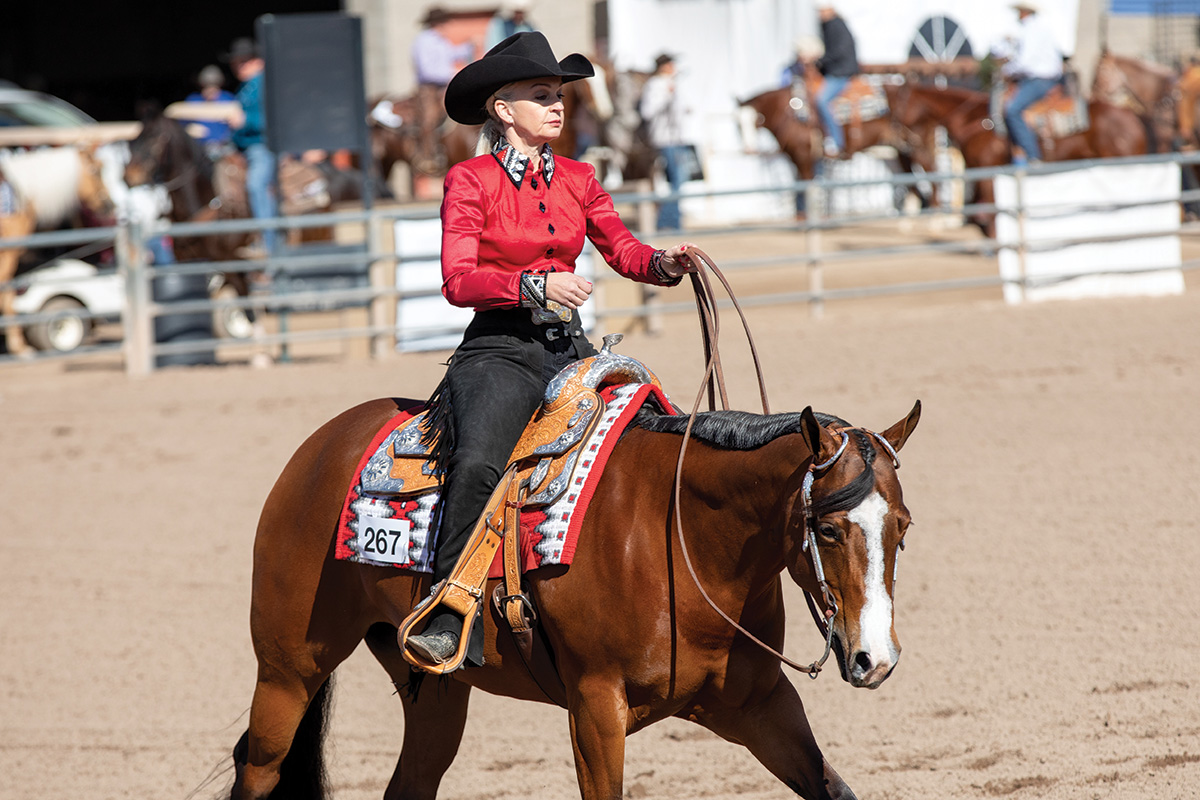
3. Fuel up on quality foods. While nerves can make eating anything iffy, it’s crucial that you take in enough calories to prep for a long show day. Eat a healthy breakfast and pack nutritious snacks. Avoid sugar, which may give you a brief uptick in energy, but will leave you crashing later. Also ensure you’re hydrated.
“Water gives you a clear mind and focus,” says Bollinger.

4. Practice tapping. Take your dominant hand and tap side-to-side at your sternum with your middle finger and thumb for a few minutes at a time, says Bollinger. This rhythmic pressure on specific acupressure points on the body have been shown to lessen anxiety and reduce stress. This can be done before you get on or while you’re astride—any time you feel your anxiety ramping up.

5. Activate your vagus nerve. The vagus nerve is part of your parasympathetic nervous system, which controls your heart rate, digestion and immune system. Taking a long, deep breath and a long exhale when your heart begins to race activates this nerve and helps slow your heart and respiratory rates.
“Whenever a thought enters [your mind] that triggers your anxiety, take that long, deep breath,” Bollinger says. It will help to calm and relax you.
6. Hang loose. Unfortunately, anxiety causes you to tense your entire body, making it a rigid form that your horse must work against. According to Bollinger, your horse feels everything you feel. Tension can cause you to raise your shoulders, lock your arms and clamp down on your horse’s sides, none of which helps you relax.
One of the easiest ways to loosen up is to let your jaw flop—literally. It may feel strange at first, but you can’t clench your jaw if your teeth aren’t together, so breathe through your mouth and let your chin wag!
Mental Preparation
7. Find your focus. This can tough to do, especially when our brains tend to go into overdrive during a show. It’s important to focus on what you can control; don’t worry about the weather or what you think your horse will spook at or anything else that’s out of your hands.
If you can’t let go of a particular thought (“Is he going to spook at that tent at the end of the ring?”), create a plan to get your horse’s attention back and redirect his energy. Bollinger suggests using positive thoughts and positive visualization (“Inside leg!”).
8. Break it down into bite-sized goals. Though we all want to walk into the show ring and own our course, pattern or class, sometimes you need tangible things to do to feel a sense of accomplishment. But just something might be small doesn’t mean it won’t add up to big results in the end.
Sitting tall, not looking for your lead or riding deep in your corners are all important keys to allowing you to (one day) go in and nail every jump or movement.
9. Visualize. Ride your pattern or course by closing your eyes and taking long, deep breaths, says Bollinger. Add in tapping while you visualize for an added effect.
Though many people visualize watching themselves ride from the sidelines, use the perspective from the back of your horse like you’re actually riding your course or test.
10. Be grateful and positive. Don’t forget how lucky you are to get to show! You get to be outside with your four-legged best friend, surrounded by people you enjoy.
To help remain focused on these things, Bollinger suggests gratitude and positive manifestation journaling. Think about and write down the answers to these prompts either the night before or the morning of the show: “What I am grateful for? How will the day culminate in a positive way?”
Extra Tips for Calming Horse Show Anxiety
11. Be present. This one is tricky, as it’s easy to think ahead (When will we get home?) or behind you and obsess over what went wrong. To remind yourself to stay in the present, focus on something very specific, like rubbing your horse’s ears and feeling how soft his coat is or listening to your horse’s footfalls beneath you.
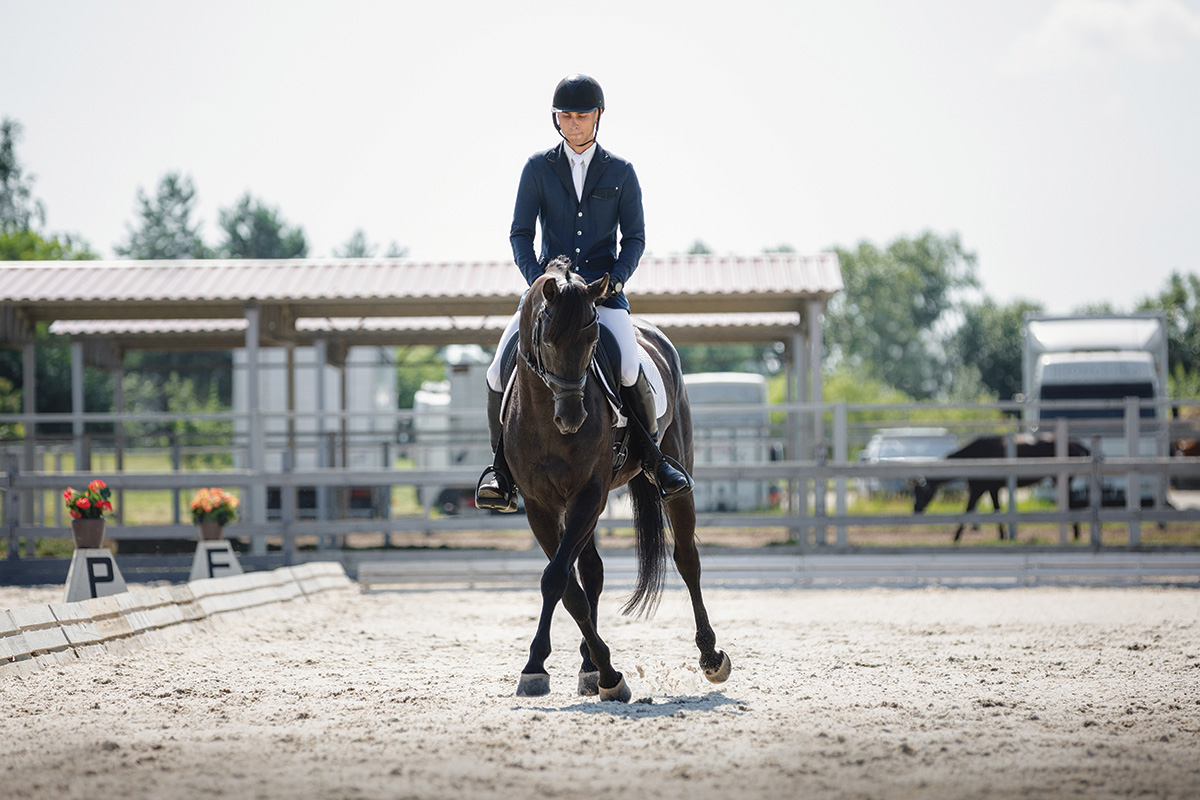
12. Take some quiet time. It’s OK to take some time for yourself, even if your cheering squad is there to celebrate your time in the ring. A few moments to gather your thoughts, run over your pattern, and pat your horse will help you give it your best shot.
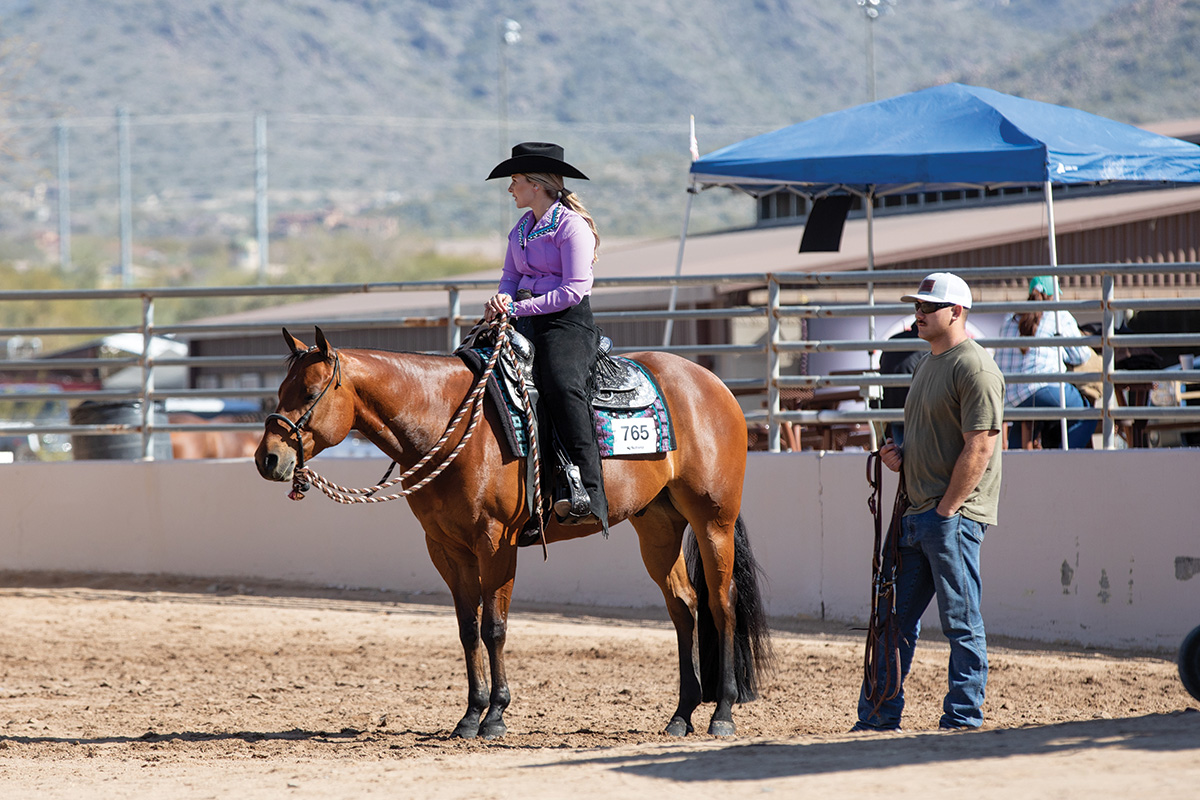
13. Give yourself an escape. This doesn’t mean you don’t try; it means you give yourself an out if things start to go sideways and you can’t correct your course.
This means thinking, “If after 20 minutes of warmup he’s still spooking at everything, I’ll scratch,” instead of, “He’s going to be bad, I know it. I’m not even going to get on.” Once you give yourself permission to leave, you won’t feel as trapped.
Accelerated Resolution TherapyAccelerated resolution therapy (ART) uses the creation of a new script or director scene, where you see the new scene that you want to experience, explains Jessica Bollinger, a licensed clinical social worker who assists athletes from a variety of disciplines. Visualizing the new script while tapping is especially helpful, she says. Bollinger has found ART to be helpful for many of her equestrian clients. “Having a bad fall or a bad experience with a horse can get [you] ‘stuck’ in the limbic part of the brain,” says Bollinger. “The limbic part of our brain doesn’t speak a language; it communicates in sensations and pictures. In ART, we process out the old, disturbing scene and replace it with the director scene. Keep the facts, lose the sensations. After a client completes their session, they can then act and react in the present, rather than from the past.” Working through a stressful situation in this manner helps you let go of past falls, fears and bad situations and move forward in your relationship with your horse. “We need to be calm and relaxed on our horses,” says Bollinger. “They feel everything that we are feeling. When we act and react in the present, we can be the best partner to them.” |
This article about how to calm your horse show anxiety and nerves appeared in the June 2023 issue of Horse Illustrated magazine. Click here to subscribe!




